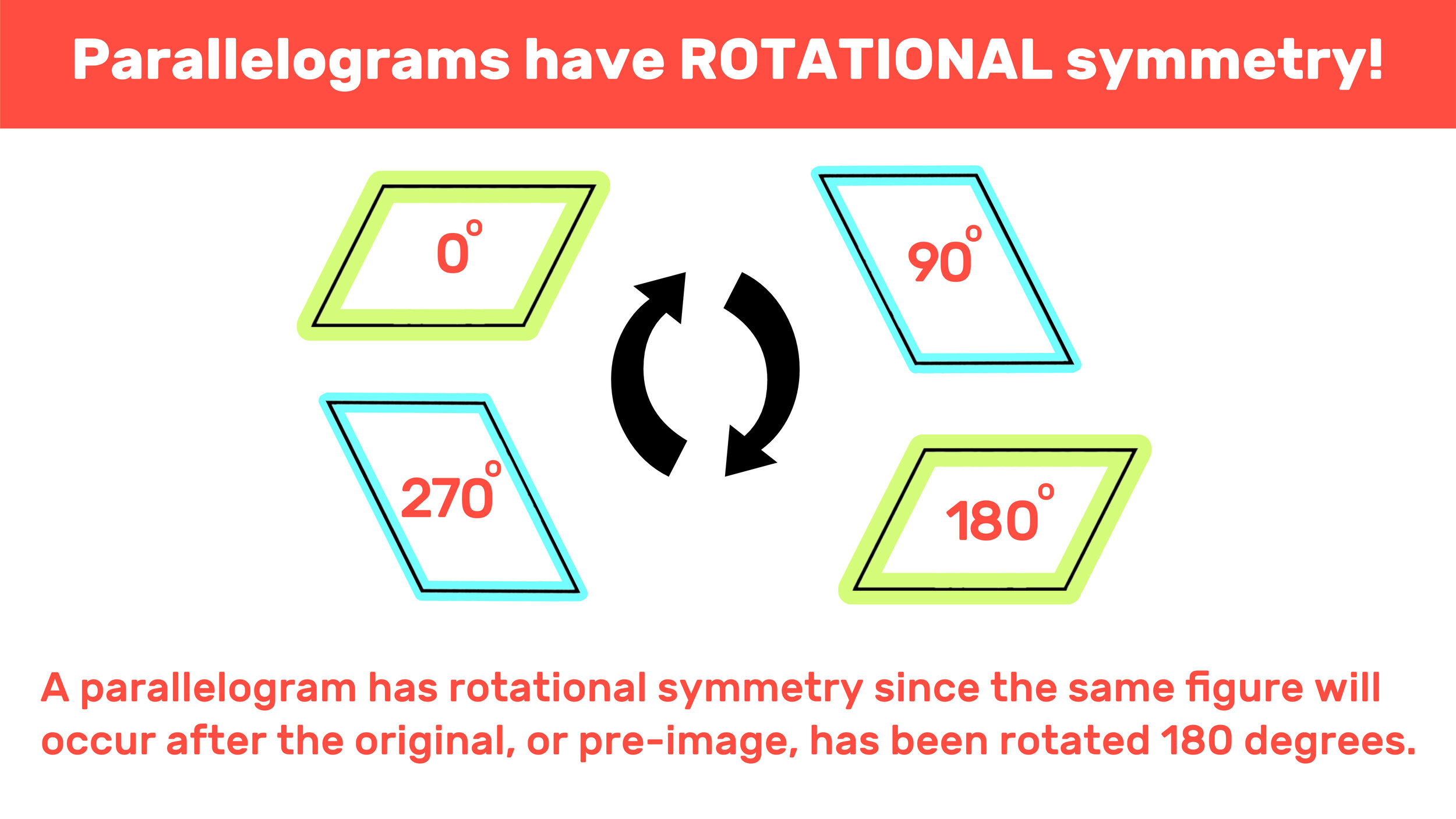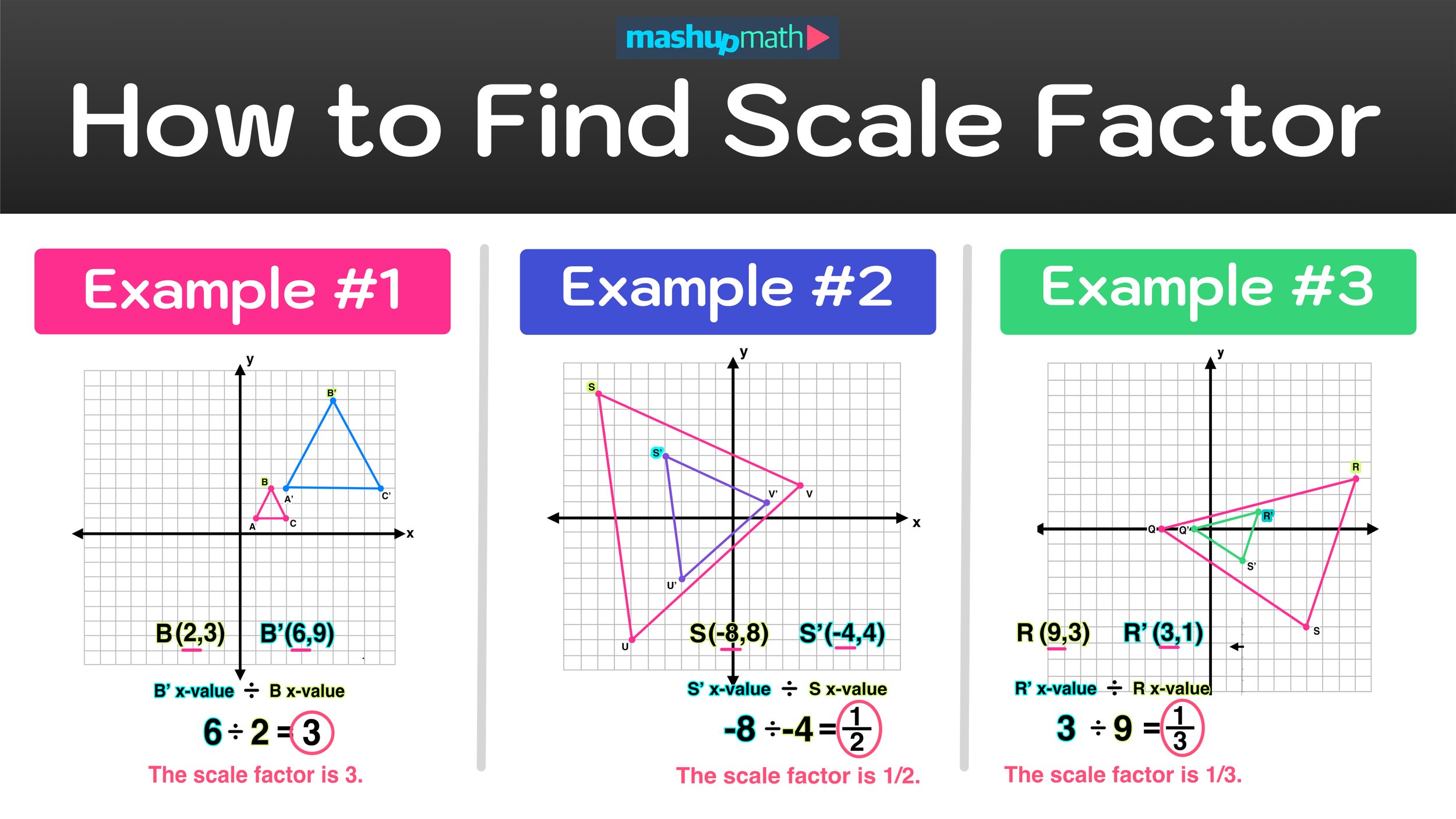Everything You Need to Know About Parallelogram Lines of Symmetry
Every Geometry class or course will include a deep exploration of the properties of parallelograms. In this post, we will quickly review the key properties of parallelograms including their sides, angles, and corresponding relationships.
Finally, we will determine whether or not a parallelogram has line symmetry. And, if a parallelogram has line symmetry, what would parallelogram lines of symmetry look like (in the form of a diagram).
Before we answer these key questions related to the symmetry of parallelograms, let’s do a quick review of the properties of parallelograms:
What is a parallelogram?
Definition: A parallelogram is a special kind of quadrilateral (a closed four-sided figure) where opposite sides are parallel to each other and have equal length.
Furthermore, the interior opposite angles in any parallelogram have equal value. And any pair of adjacent interior angles in a parallelogram are supplementary (they have a sum of 180 degrees).
The following diagram illustrates these key properties of parallelograms:
Parallelogram Lines of Symmetry
Now that you understand the key properties and angle relationships of parallelograms, you are ready to explore the following questions:
Do parallelograms have line symmetry?
What is the number of lines of symmetry in a parallelogram?
If parallelograms do not have lines of symmetry, then why doesn’t a parallelogram have lines of symmetry?
For starters, let's note that a line of symmetry is an axis or imaginary line that can pass through the center of a shape (facing in any direction) such that it cuts the shape into two equal halves that are mirror images of each other.
For example, a square, a rectangle, and a rhombus all have line symmetry because at least one imaginary line can be drawn through the center of the shape that cuts it into two equal halves that are mirror images of each other.
In fact, a shape can have multiple lines of symmetry. In the diagram below, you can see that a square has four lines of symmetry, while a rectangle and a rhombus each have only two lines of symmetry.
What about a parallelogram?
It turns out that a parallelogram does not have any lines of symmetry.
But why doesn’t a parallelogram have lines of symmetry? Because, for any parallelogram, it is impossible to construct a line of symmetry (an axis or imaginary line that passes through the center of the figure and cuts the image in half, where each side is a mirror image of the other).
You can go ahead and try to construct a line of symmetry on any parallelogram and you will see that it is impossible.
The figure below, summarizes why the total number of lines of symmetry in a parallelogram is zero.
Does a parallelogram have any symmetry at all?
While parallelograms do not have line symmetry, they do have rotational symmetry!
In geometry, rotational symmetry refers to when a shape or figure is exactly the same as its pre-image after it has been rotated a number of degrees.
A parallelogram has rotational symmetry since the same figure will occur after the original, or pre-image, has been rotated 180 degrees.
The figure below further illustrates why parallelograms have rotational symmetry.
Conclusion
In today’s lesson, we explored parallelogram lines of symmetry, whether or not they exist, and whether or not parallelograms have any symmetry at all.
After reviewing the properties of parallelograms, namely that they are quadrilaterals where the opposite sides and opposite angles are equal, we went on to determine whether or not parallelograms have any line symmetry.
By applying the definition of a line of symmetry, we concluded that, while shapes like squares and rectangles do indeed have lines of symmetry, that parallelograms do not have any lines of symmetry.
Parallelograms have zero lines of symmetry because it is impossible to draw a line through the center of any parallelogram that divides the figure into two equal halves that are mirror images of each other.
However, even though parallelograms do not have line symmetry, they do have rotational symmetry since any parallelogram, after a rotation of 180 degrees, will result in the exact same image as you started with.
Share your thoughts, questions, and suggestions in the comments section below!
(Never miss a Mashup Math blog--click here to get our weekly newsletter!)
By Anthony Persico
Anthony is the content crafter and head educator for YouTube's MashUp Math and an advisor to Amazon Education's 'With Math I Can' Campaign. You can often find me happily developing animated math lessons to share on my YouTube channel . Or spending way too much time at the gym or playing on my phone.


















